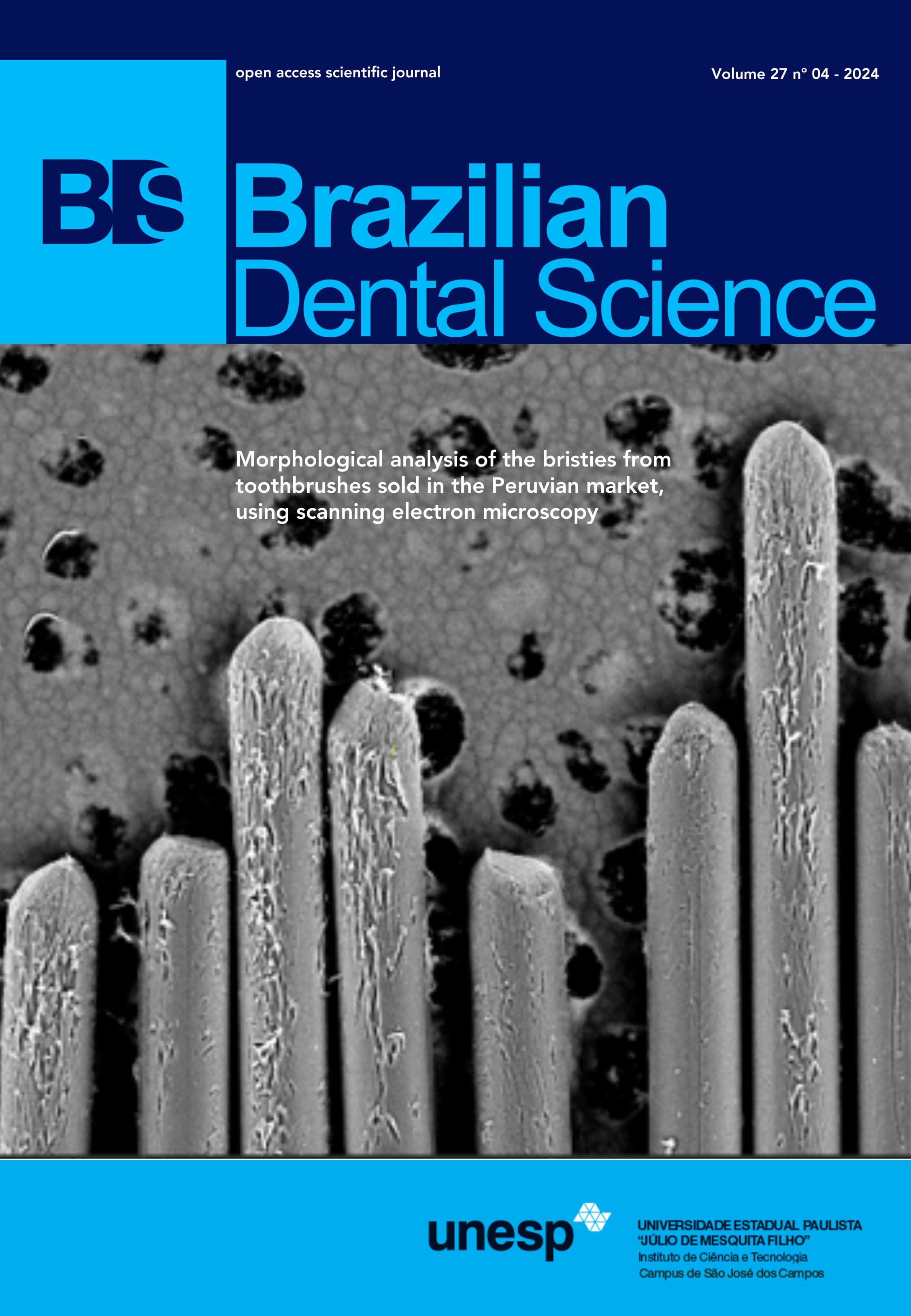Utilizing Texture Analysis technique in diagnostic imaging at Dentistry: innovations and applications
DOI:
https://doi.org/10.4322/bds.2024.e4342Abstract
Background: The Texture Analysis (TA) technique allows the evaluation of intrinsic properties by extracting signal patterns from pixels and voxels in images that are unnoticed by the human eye. In medical imaging, TA has been applied to the characterization of various lesions. In Dentistry, in recent years, we have observed the application of this tool in various specialties. Objective: This short communication aims to present the applications of the texture analysis (TA) technique in Dentistry and its possibilities for the coming years. Material and Methods: For this brief review, the search was conducted in the Pubmed, LILACS, and Google Scholar databases, using the descriptors “Computer-Assisted Image Processing”, “Diagnostic Imaging” and Dentistry”. Were included articles that addressed the topic, published in the last 5 years in English, and compatible with the present theme. Considering the 22 articles found, it was observed that, for the most part, AT applications aim to assist in the diagnosis of lesions of the maxillofacial complex. Then temporomandibular disorders and oral manifestations of autoimmune conditions. There are also applications in orthodontics, periodontics, implant dentistry, and cariology. Conclusion: The TA technique presents itself as a promising method within dental imaging, since, through its mathematical and quantitative tools, it provides greater accuracy and objectivity. In this way, we can see the emergence of a biomarker that assists professionals in the early diagnosis of injuries. However, the research carried out to date has limitations, and more studies are needed to understand the capabilities of TA.
KEYWORDS
Computer Assisted Diagnosis; Diagnostic Imaging; Dentistry; Radiomics; Radiology.
Downloads
Published
How to Cite
Issue
Section
License
Brazilian Dental Science uses the Creative Commons (CC-BY 4.0) license, thus preserving the integrity of articles in an open access environment. The journal allows the author to retain publishing rights without restrictions.
=================




























